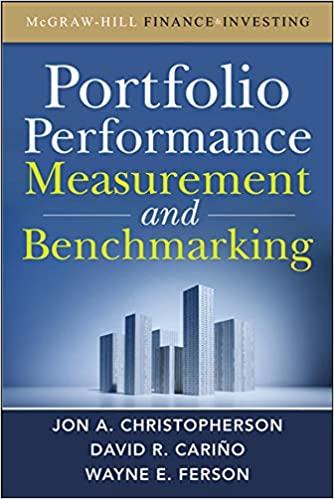Question
F2 Q19-20 19. You are working on a big new idea for your firm. You have projected an EBIT of $5 million starting next year
F2 Q19-20
19.
You are working on a big new idea for your firm. You have projected an EBIT of $5 million starting next year (t = 1) with a growth rate of 3.50% over the foreseeable future thereafter. This endeavor will require a substantial investment and you will have to convince investors to provide you the capital to do so. Your firm will consider all types of financing options, but the first critical step in your analysis is figuring out the present value of the cash flows of the new business. Your research has revealed the following information: similar businesses have a beta asset of 2.00, the risk-free rate is 2.00% and the expected market risk premium (the average difference between the market return and the risk-free rate) is 3.50%. The corporate tax rate is 35% and interest payments on debt are tax deductible. You are tasked to figure out the value of the business under various financing alternatives, including long-term loan/debt. You have considered a loan of $25 million in perpetuity at an interest rate of 4%. Realizing that the chances of bankruptcy are negligible with this amount of ongoing debt on your balance sheet, and the riskiness of the tax shield of debt is the same as the riskiness of debt, you decide to take on $25 million of debt in perpetuity. Given this decision, you want to consider the Multiples Approach to Valuation as a double-check for your detailed Discounted Cash Flow (DCF) Based analyses. Fortunately, there have been several market transactions in this business environment using various capital structures, but you want to choose the most optimal multiple to use given your decision to use a specific capital structure. The best multiple to use will be:
a. P/E Multiple.
b. Either one is suitable for your situation.
c. EBITDA Multiple.
d. Neither one is suitable for your situation.
20.
You are working on a big new idea for your firm. You have projected an EBIT of $5 million starting next year (t = 1) with a growth rate of 3.50% over the foreseeable future thereafter. This endeavor will require a substantial investment and you will have to convince investors to provide you the capital to do so. Your firm will consider all types of financing options, but the first critical step in your analysis is figuring out the present value of the cash flows of the new business. Your research has revealed the following information: similar businesses have a beta asset of 2.00, the risk-free rate is 2.00% and the expected market risk premium (the average difference between the market return and the risk-free rate) is 3.50%. The corporate tax rate is 35% and interest payments on debt are tax deductible. You are tasked to figure out the value of the business under various financing alternatives, including long-term loan/debt. You have considered a loan of $25 million in perpetuity at an interest rate of 4%. Realizing that the chances of bankruptcy are negligible with this amount of ongoing debt on your balance sheet, and the riskiness of the tax shield of debt is the same as the riskiness of debt, you decide to take on $25 million of debt in perpetuity. Congress however is seriously contemplating modifying the tax subsidy to only debt, that is, the deductibility of interest from earnings before taxes are calculated. They instead will also allow dividend payments to be tax deductible, making giving both forms of financing the same tax status. Given this information, and assuming that costs of bankruptcy are likely to be negligible, you should:
a. Change your capital structure increase the amount of equity.
b. Not worry about your capital structure and focus on the drivers of your business.
c. Keep your capital structure unchanged because all your previous analysis will remain valid.
Step by Step Solution
There are 3 Steps involved in it
Step: 1

Get Instant Access to Expert-Tailored Solutions
See step-by-step solutions with expert insights and AI powered tools for academic success
Step: 2

Step: 3

Ace Your Homework with AI
Get the answers you need in no time with our AI-driven, step-by-step assistance
Get Started


